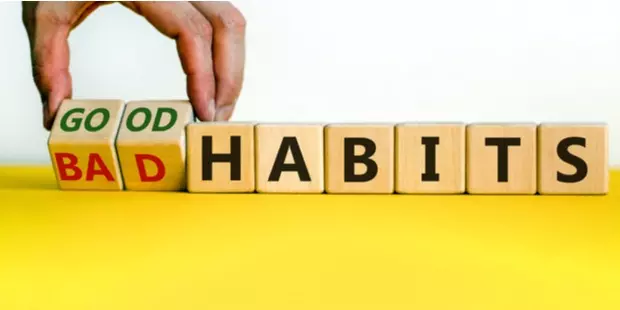Humans are creatures of habit. Most people have a favorite dish they eat regularly, a specific music genre they listen to, and an evening routine that helps them wind down. We all stick to certain patterns in various aspects of our lives, and that often includes our online poker play.
From the moment you play your first poker hand, your brain begins analyzing and interpreting data: which moves seemed to be highly beneficial? Which strategies were rather disappointing? Little by little, you accumulate data that helps create your gambling patterns. Some of those patterns can be somewhat helpful, while others can lead you to one loss after another.
The most pressing question is which poker patterns should you avoid at all costs? And which habits should you nurture? Now is your chance to learn everything you can about poker patterns and how they affect your chances of winning.
4 Bad Poker Patterns You Should Get Rid Of
Many players who develop a gambling pattern open themselves up for trouble, as their moves sometimes become predictable - a weakness your opponents can easily exploit.
So, what are the most common poker patterns you should never adopt?
- Always checking the river – Imagine this scenario: the flop and turn reveal decent cards that might be of benefit to you, so you place a bet. But when the river doesn't increase the value of your hand, you check. Sounds familiar? Most poker players decided to check the river at some point or another, but it's a rather dangerous move. Think about your opponent: if he sees you hesitate when all the community cards are revealed, he will probably deduce that your hand is not that strong – and he will be correct. That will give him a chance to bluff and pretend he has a strong hand, and there is nothing you can do about that.
- Constantly check-raising – While the check-raise strategy can be a powerful tool in the hands of an experienced player, if you use this move too often – your opponent is bound to figure you out. This strategy should be used when you have a strong hand, and you don't want your opponents to fold before they help grow the pot. But if you turn this strategy into an obvious gambling pattern, your opponents will be able to see you coming from miles away, and they might fold early on.
- Folding on the flop – There is one sure way to spot a tight and careful player: look for anyone who constantly folds on the flop. Many players wait for the first community cards to be revealed before deciding whether they should stay in the game or not. You might find that your instincts encourage you to fold the moment you realize your hand is weak, but if you fold too often – your opponents will have no trouble in figuring you out. Once you're categorized as a tight player, the rest of the players at the table will know that whenever you keep playing after the flop – it must mean you have a strong hand. Those opponents will probably fold immediately to reduce their losses, and that will leave you with a tiny pot and a minimal amount of excitement.
- Call, call, raise – Some poker players try to be sneaky by calling both on the flop and turn, only to raise on the river when they have strong hands. And while this strategy might work for you once or twice, other players will become more cautious if you raise on the river too often. They might peg you as a cunning player, and they won't be as keen to place big bets in your presence. And that's something you should avoid if you want the pot to grow constantly!!
All of those behavioral patterns can be used against you, so you should make sure you're not making it easy for your opponents to beat you.
4 Good Poker Patterns You Should Stick To
While there are plenty of bad habits you can pick up as you play poker, some repetitive behavioral patterns can help you evolve as a poker player.
- Develop a good pre-game routine – Professional athletes often have a pre-game routine they consider sacred, as it helps them get into the right mindset to win games. And the same thing should apply to poker players! Develop a routine that will help you optimize your decision-making process so you will be able to increase your wins.
- Look for your opponent's betting patterns – Now that you know which poker patterns you should avoid, you are less likely to make the mistakes we've mentioned previously. But your opponents might not be aware they should stay away from highly predictable betting patterns, so if you're alert enough, you might be able to figure out their gambling preferences and use them to your advantage!
- Be consistently unpredictable – To outwit your opponents, you can't allow them to figure out your playing style. Keep them at a disadvantage by changing strategies and gambling patterns from time to time, which is bound to confuse even the toughest players out there.
- Get into the habit of studying – There is only one way to get better and better at poker: studying. Never stop working and improving your poker skills, or else you might lose your edge. Create a regular study schedule, read strategy books, watch videos, and practice as much as possible!
What Are Your Poker Playing Patterns?
Now that you're aware of the most common gambling patterns a poker player can develop, which patterns are you going to stick to? And which patterns are you planning on getting rid of as soon as possible?

